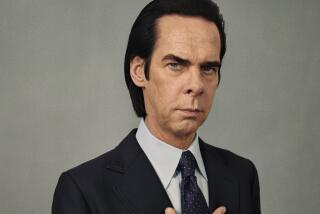John Cageâs reach extended well beyond experimental music
John Cageâs ideas have long inspired artists inside and outside the experimental music subculture. Besides new-music figures considered disciples or associates â Christian Wolff, Earle Brown, Morton Feldman and David Tudor, for example â he had an effect on the most famous rock band of all time: Paul McCartney became interested in Cage in 1966, and the chaotic orchestration of the Beatlesâ âA Day in the Lifeâ is thought to have derived from Cageâs ideas, as had several of John Lennonâs songs during the bandâs last years, including âRevolution 9,â with its debt to Cageâs notions of randomness.
Musicians further on the edge â Brian Eno, Steve Reich, La Monte Young, Anthony Braxton, Sonic Youth and Stereolab, which has a song called âJohn Cage Bubblegumâ â bear his stamp as well.
The composer-writer-theoretician has also exerted an influence in the worlds of dance, visual art, opera and alternative rock. Here, a few artists speak about his impact.
Full story | Timeline | Music | Criticâs Notebook | Events
Every piece of music reflects the composerâs vision of the world. To enter Cageâs worldview is to be invited into a generous, humble, light space, where a virtuosic musical turn is of equal value to a routine action or a committed silence. Cageâs music gently asks the audience to silence the voice in your head that searches for meaning or anticipates a cadence; instead, Cage asks you to simply be present and coexist with the sounds that arise and die away.
â Yuval Sharon, opera director with roots in the New York City Opera; co-founder of Los Angeles artistic company the Industry
When Superchunk was touring a lot, in the â90s, I started to pick up records and books. I always thought his effect was about how you live your life, and how you think about art, rather than the way a Superchunk record is put together.
He was interested in the idea of indeterminacy and randomness and chaos â not just embracing it, but seeing the art in it. Itâs a very generous take on the world.
Itâs not something youâd throw on at a party, but the âIndeterminacyâ record is so inspiring and surprising: It doesnât matter what era itâs from, itâs still shocking. You donât know whatâs coming next.
â Mac McCaughan, singer and guitar player for the bands Superchunk and Portastatic and founder of the celebrated North Carolina-based indie-rock label Merge Records
Full story | Timeline | Music | Criticâs Notebook | Events
Cage inspired me when I knew him tremendously, and [he] became a kind of guru to most people who knew him. I did paintings and sculpture based on random operations. We all played around with his ideas, his ways of thinking.
By accepting the unexpected in art as in life. Welcoming the unknown, the surprising, the unfathomable, the illogic, the dense and working with it in the art work, the theatrical indeterminacy.
It works in art as in daily life, keeps us alert and ready to improvise. It gives us endless shocks, challenges and surprises. It keeps us young.
His presence was peculiar â unlike anyone elseâs. He was always either smiling and laughing â or extremely serious. Nothing in between.
âRachel Rosenthal, performance artist who knew Cage in New York in the 1950s and has run companies in L.A. that blur the lines among art, theater and dance
Cage was mostly important to people like me because of his use of chance and concepts like the sound of a room. I donât think he was a huge influence on me as an artist, but his influence on thinking about art was enormous.
Full story | Timeline | Music | Criticâs Notebook | Events
Itâs similar to someone like Jean-Luc Godard saying you need a beginning, middle and end, but not in that order. Cage is one of the figures who set the stage for what happened after 1955.
But whether artists were directly influenced, itâs hard to say. Being directly influenced by John Cage would be ridiculous, like being directly influenced by Warhol or Duchamp. Youâd have to argue with it, subvert it.
âJeremy Gilbert-Rolfe, British-born abstract painter and chair of the graduate art program at Art Center College of Design in Pasadena
A piece like â4â33ââ is not just about silence â itâs about all kinds of environmental noises. For me, that led to a consciousness of the entire environment around a piece. Most European concert music had been about shutting out the environment.
Even a much later piece like âRoaratorio,â based on a reading of âFinnegans Wake,â might seem like the opposite because itâs very noisy. But I think thereâs a real philosophical link between the two.
Full story | Timeline | Music | Criticâs Notebook | Events
Another really important thing about Cage is he created an experimental music network by identifying and connecting people who he thought should know each other.
â New-music composer Michael Pisaro teaches at Cal Arts in Valencia. Heâs also a guitarist and a member of the international composers-performers group Wandelweiser.
Every song on âLove at the Bottom of the Seaâ features these new chance-based electronic instruments â not traditional synthesizers â such as the Dewanatron Melody Gin, the Folktek Micro Garden and the Buchla Source of Uncertainty. They are not under my control, except that of course I can turn them off. This is the product of an aesthetic which wouldnât exist without Cage.
Stephin Merritt founded the chamber-pop band the Magnetic Fields in Boston in the early â90s. He is now based in Los Angeles.
More to Read
The biggest entertainment stories
Get our big stories about Hollywood, film, television, music, arts, culture and more right in your inbox as soon as they publish.
You may occasionally receive promotional content from the Los Angeles Times.










